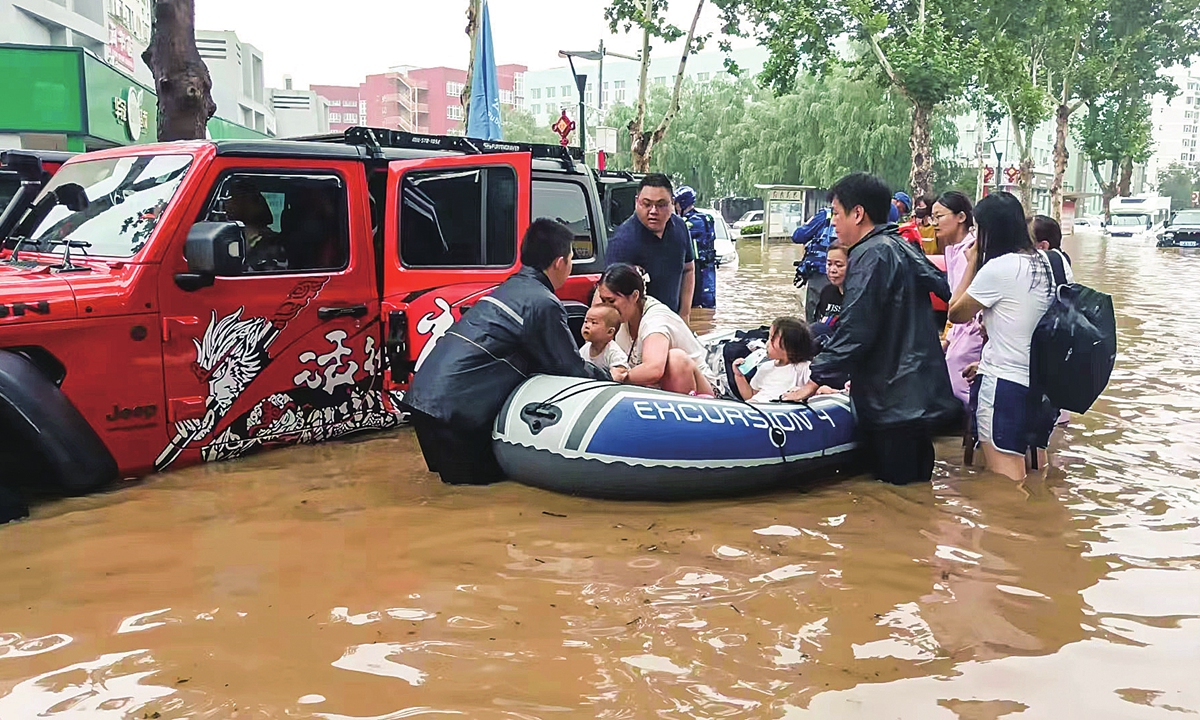
A Chinese civil relief team evacuates victims affected by flooding in Beijing's Fangshan district on August 1, 2023. Photo: Courtesy of Blue Sky rescue team
Amid torrential rain, rivers surged, houses collapsed and communications were disrupted... Under the influence of Typhoon Doksuri, heavy rainfall has persisted in Northern China, impacting regions like Beijing, the neighboring Tianjin Municipality and Hebei Province and setting records that haven't been seen in a century. Rescuers are racing against time, fighting to establish a "lifeline" to save lives and property.
From 8 pm on July 29 to 7 am on August 2, extreme heavy rainfall has drenched China's capital city. The highest recorded rainfall was at the Wangjiayuan Reservoir in the Changping district, being a total of 744.8 millimeters over this period, the local meteorological department reported on Wednesday.
This extreme rainfall has significantly exceeded historical records, ranking it as the highest recorded rainfall in the past 140 years.
In Beijing, multiple areas in Mentougou district in western Beijing faced dangerous situations, while communications were disrupted in 62 villages across seven townships in Fangshan district in southwestern Beijing.
The water level of the Yongding River, the main waterway in Beijing, surged, while a bridge over the Xiaoqing River located west of Lugou Bridge collapsed.
In response to the torrential rainstorms and floods that have wreaked havoc in Beijing and its surrounding regions, authorities are mobilizing an all-out effort to safeguard the people from the impact of disasters. Various rescue teams have been working tirelessly to provide assistance.
On Thursday, the Global Times reporters saw People's Armed Police soldiers assist in the relocation of disaster-affected residents in Liulihe township, Fangshan district.
Fortunately, as water levels gradually recede, rescue operations in Fangshan are nearing completion.
Simultaneously, to alleviate flood control pressure on Beijing and Tianjin, Hebei has activated seven flood water detention areas and relocated 1.2 million residents, according to a report from the Hebei Daily on Wednesday.
Zhuozhou, a city in Hebei Province that neighbors the Fangshan district of Beijing, has seen over 130,000 people affected by the disaster and is still being heavily impacted by flooding. More than 150 civilian rescue teams arrived, and more have been summoned from across the country.
On Thursday, members of the volunteer rescue team, including the Blue Sky Rescue team, helped transfer flood-affected residents and supplies in Huangjiajie village and Mengjiajie village in Matou township, Zhuozhou. Meanwhile, more rescue supplies were arriving at the scene.
Before the arrival of the flood, residents living on low ground had been notified and relocated to safe places, the Global Times learned from local residents.
On Wednesday evening, the Global Times witnessed villagers from Mentougou district departing from Yanchi township and moving downhill along the railway to safer areas.
Meanwhile, soldiers of the People's Liberation Army rescued villagers from remote mountainous villages, especially elderly people with mobility issues, using military trucks, transporting them to temporary shelters.
During the evacuation process, an interim command center was established in the Mentougou district to coordinate various rescue efforts. Simultaneously, emergency, firefighting, medical, and other rescue and support forces were deployed.
Relief points were set up to provide drinking water, food, medicine, and other supplies to ensure the safety and basic needs of the evacuees.
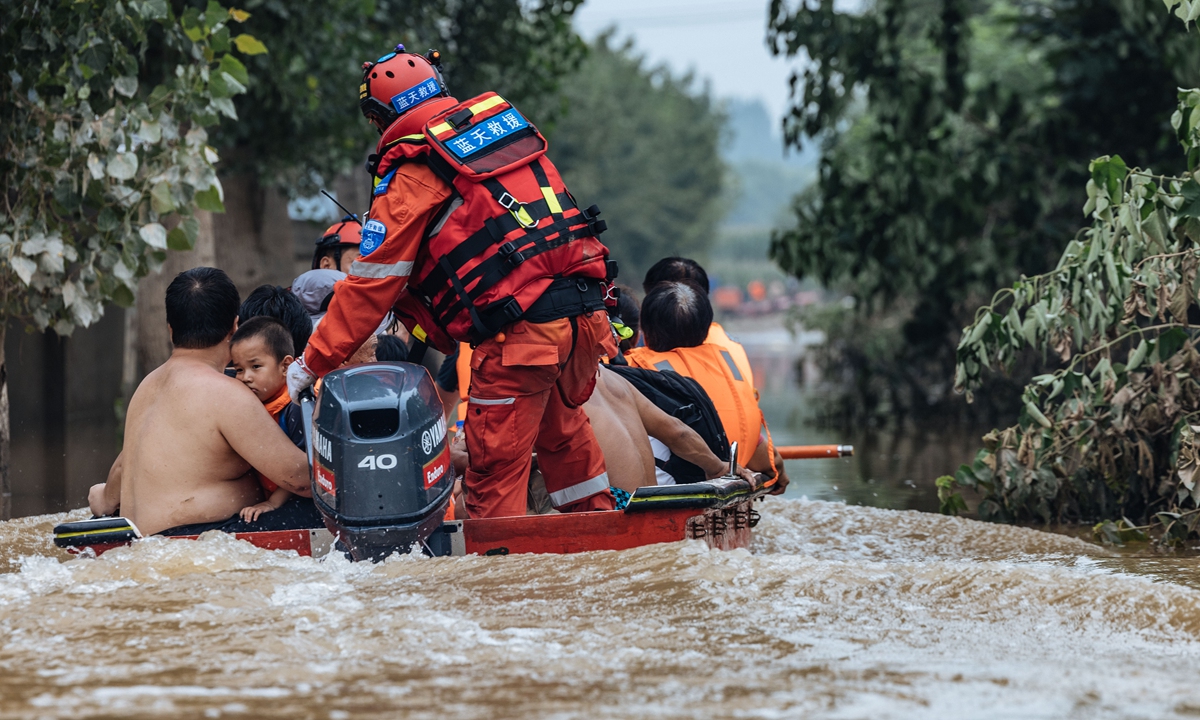
Members of the Blue Sky rescue team transport flood-affected residents and supplies in Huangjiajie village and Mengjiajie village in Matou township, Zhuozhou, North China's Hebei Province, on August 3, 2023. Photo:Li Hao/GT
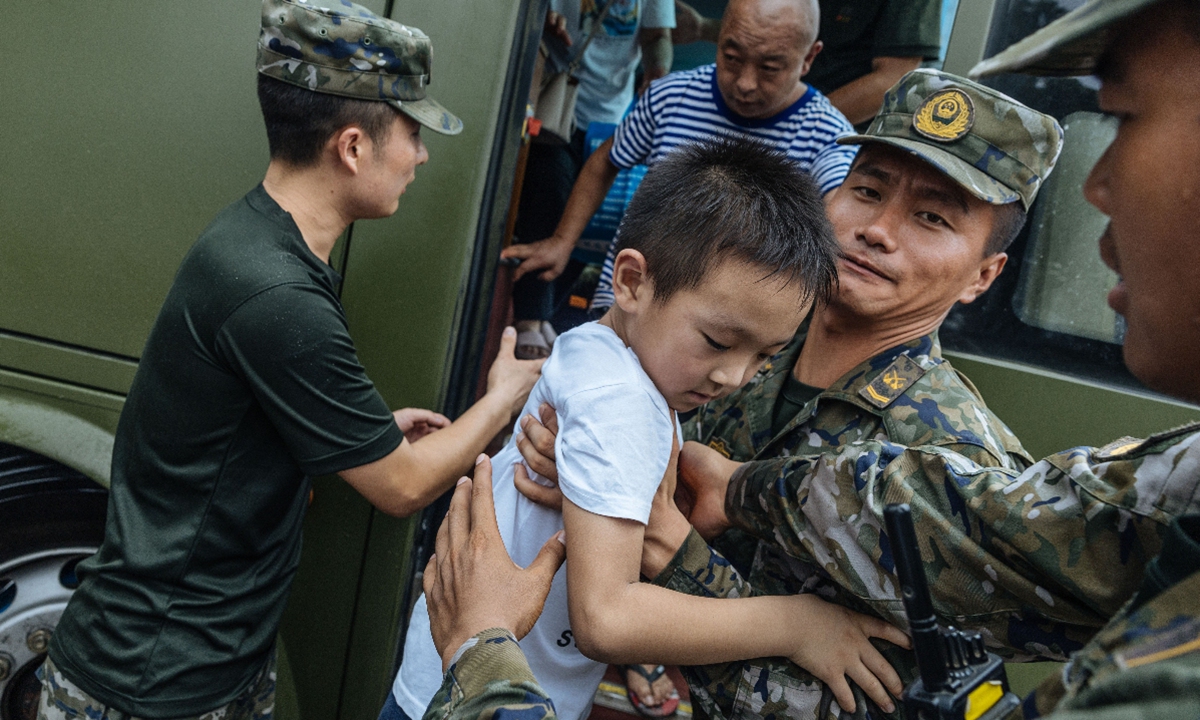
People's Armed Police soldiers assist in the relocation of disaster-affected residents in Liulihe township, Fangshan district, southwestern Beijing on August 3, 2023. Photo: Li Hao/GT
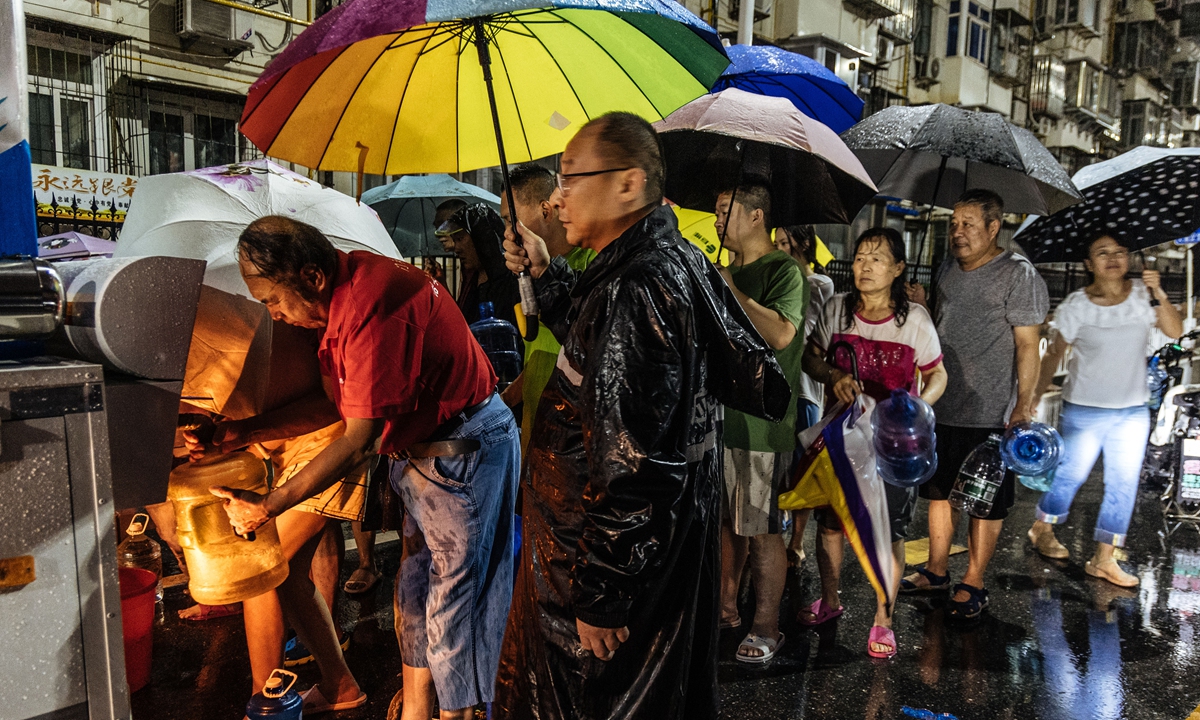
Emergency vehicles from a water company arrives at an affected community to provide temporary drinking water to residents suffering from water shortages in Beijing on July 31, 2023. Photo: Li Hao/GT
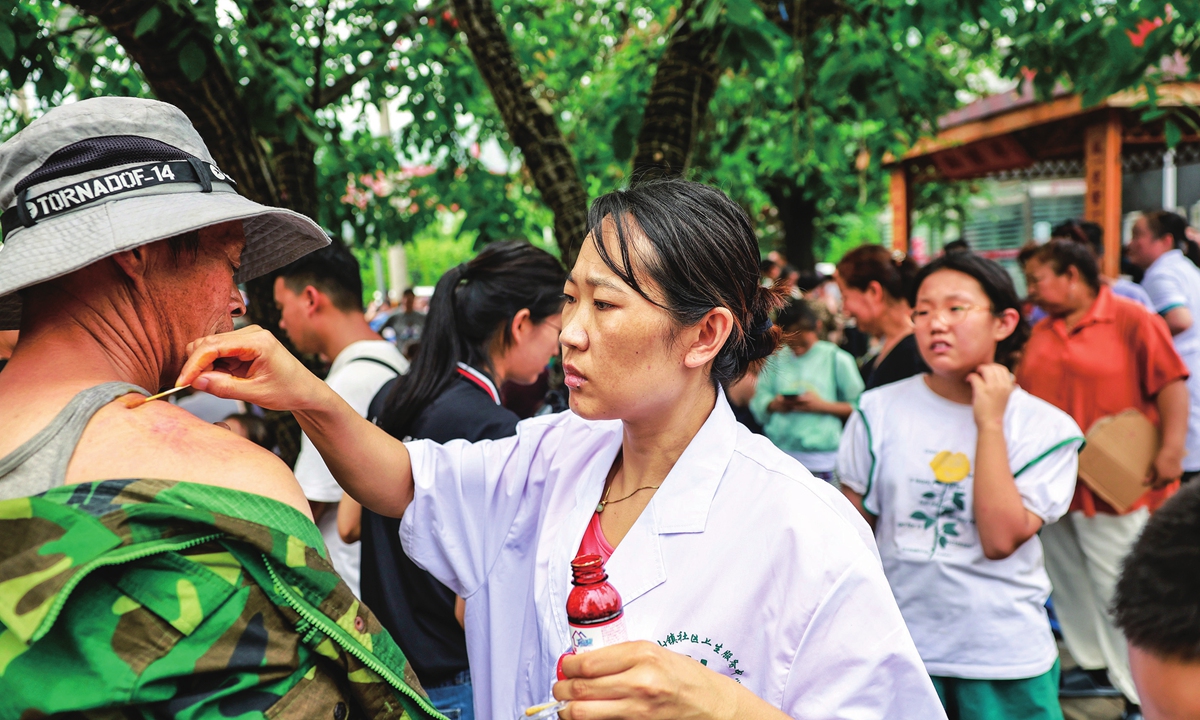
Medics treat injured residents at a temporary medical aid station set up for flood-hit residents in the Mentougou district, Beijing, on August 2, 2023. Photo: Li Hao/GT
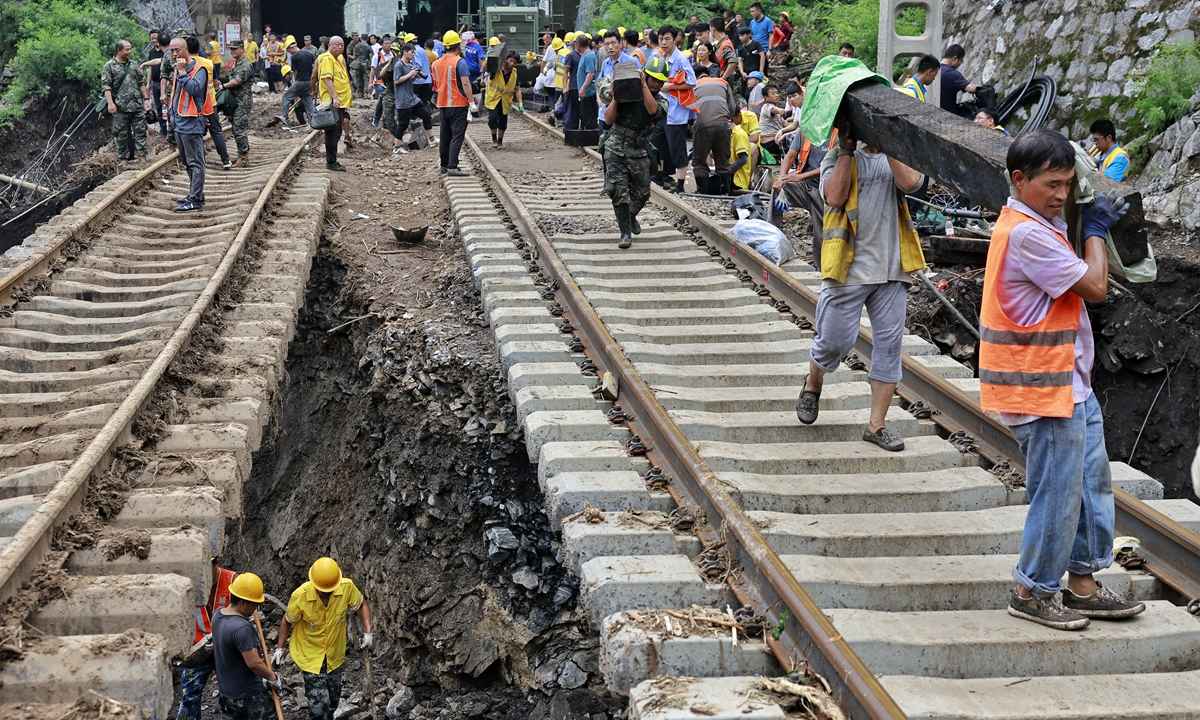
Construction teams carry out emergency repairs at night and set up 2,000 wooden sleepers to support the railway line on August 2, 2023 as the railway line connecting Beijing and Zhangjiakou, Hebei Province, was hit by a mudslide and the roadbed suffered a severe collapse. Photo: Li Hao/GT









